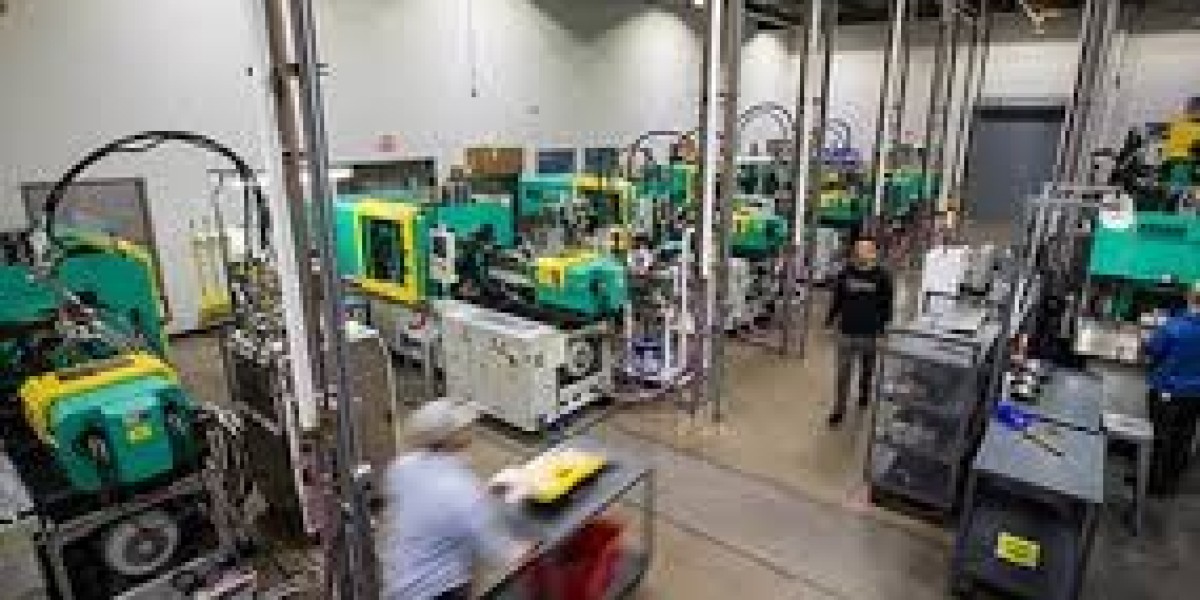In the world of plastic manufacturing, choosing the right molding process is critical for ensuring cost-effectiveness, production efficiency, and design versatility. Among the most common methods used today are blow molding and injection molding, each with distinct advantages depending on the product type and production needs. Understanding the core differences between these two processes can help manufacturers make more informed decisions, optimize product design, and meet market demands effectively.
This article explores the key distinctions between blow molding vs injection molding, focusing on their capabilities in terms of design flexibility and production efficiency. Whether you're manufacturing bottles, containers, automotive components, or intricate plastic parts, understanding these differences can significantly impact your product’s success and overall production strategy.
Understanding the Basics of Blow Molding and Injection Molding
Before diving into a comparative analysis of blow molding vs injection molding, it's essential to grasp how each process works. Blow molding is a manufacturing method used to create hollow plastic parts, such as bottles and containers. The process involves inflating a heated plastic tube (called a parison) inside a mold cavity, causing the plastic to conform to the mold’s shape as it cools. This method is ideal for producing lightweight, uniform, and high-volume plastic items with consistent wall thickness.
Injection molding, on the other hand, involves injecting molten plastic into a closed mold under high pressure. Once the material cools and solidifies, the mold opens, and the finished part is ejected. This process is widely used to create complex, high-precision parts with tight tolerances, often found in medical devices, electronics, and automotive components. Because of its precision, injection molding is preferred when intricate detail and structural integrity are priorities.
Design Flexibility: Which Method Offers More Creative Freedom?
When comparing blow molding vs injection molding from a design flexibility standpoint, both offer unique advantages depending on the application. Blow molding excels at producing hollow, lightweight structures with simple to moderately complex shapes. It is particularly advantageous for designs requiring uniform wall thickness around a cavity, such as beverage bottles, fuel tanks, and other containers. The flexibility to create varying bottle neck designs, handle configurations, and even multi-layer structures is one of the reasons why blow molding remains a go-to choice for packaging manufacturers.
Injection molding, by contrast, allows for the production of highly detailed and complex parts with intricate geometries. Designers working with injection molding can integrate features like threads, undercuts, snap fits, and multi-part assemblies directly into a single molded piece. This ability greatly reduces the need for secondary processes or assembly work. However, the mold design can be more complicated and expensive, making it more suitable for parts where precision is critical and volumes justify the tooling investment.
Production Efficiency and Material Usage
Efficiency in production is a major consideration when deciding between blow molding vs injection molding. Blow molding is generally faster for creating hollow parts, especially when large quantities are needed. The cycle times are shorter, and the molds are usually less complex and less expensive compared to injection molds. Blow molding machines can produce thousands of bottles per hour with minimal downtime, making them ideal for high-volume production environments such as beverage or pharmaceutical industries.
Injection molding, while potentially slower in cycle time due to the need for precision and cooling, can be highly efficient once set up. With automation, multi-cavity molds, and robotics, injection molding can produce millions of parts with remarkable consistency. Additionally, injection molding tends to generate less waste because it can precisely control how much material is injected into the mold. In contrast, blow molding can sometimes lead to material waste during trimming processes, especially in extrusion blow molding.
Cost Considerations: Tooling, Labor, and Scalability
Cost efficiency is a key metric in any manufacturing decision. When evaluating blow molding vs injection molding, tooling costs are a primary factor. Blow molding typically requires less expensive molds, which makes it more appealing for manufacturers producing large, hollow items in high volumes. The simpler mold construction also translates to quicker turnaround times in mold production, allowing for faster prototyping and product development.
Injection molding, although more expensive initially due to complex mold design and longer development time, pays off in the long run for mass production of intricate parts. The durability of injection molds allows for millions of cycles with minimal wear and maintenance. Additionally, labor costs can be lower with injection molding thanks to higher automation levels and reduced need for post-processing. However, small-scale production or prototyping may not justify the high upfront tooling costs unless the product design is finalized and mass production is anticipated.
Application Suitability: Choosing the Right Method for Your Product
Ultimately, when choosing between blow molding vs injection molding, the best method depends on the type of product you aim to manufacture. Blow molding is best suited for items like plastic bottles, containers, tanks, and other hollow shapes. Its strength lies in producing high volumes of lightweight, uniform containers with minimal material usage and cost. It's commonly used in industries such as packaging, automotive (fuel tanks), and household goods (detergent bottles).
Injection molding is the better choice when manufacturing components that require fine detail, precise tolerances, and structural strength. This includes everything from electronic housings and automotive parts to medical instruments and custom fasteners. For products involving multiple design features or requiring high repeatability and strength, injection molding is the ideal solution. The decision should always consider end-use requirements, expected volumes, material preferences, and budget constraints.
Conclusion
In the debate of blow molding vs injection molding, there is no one-size-fits-all answer. Each method offers distinct strengths in terms of design flexibility, production efficiency, and cost. Blow molding stands out for high-volume production of hollow products with simplified tooling and shorter cycles. In contrast, injection molding shines when precision, durability, and complex designs are paramount.
Choosing between these two methods requires a clear understanding of the product’s intended function, production scale, and design complexity. Manufacturers who weigh the pros and cons of each process based on their specific needs will be better positioned to deliver quality products efficiently and economically. Whether you're developing a new packaging solution or engineering intricate plastic components, the right molding process is essential to your success.








